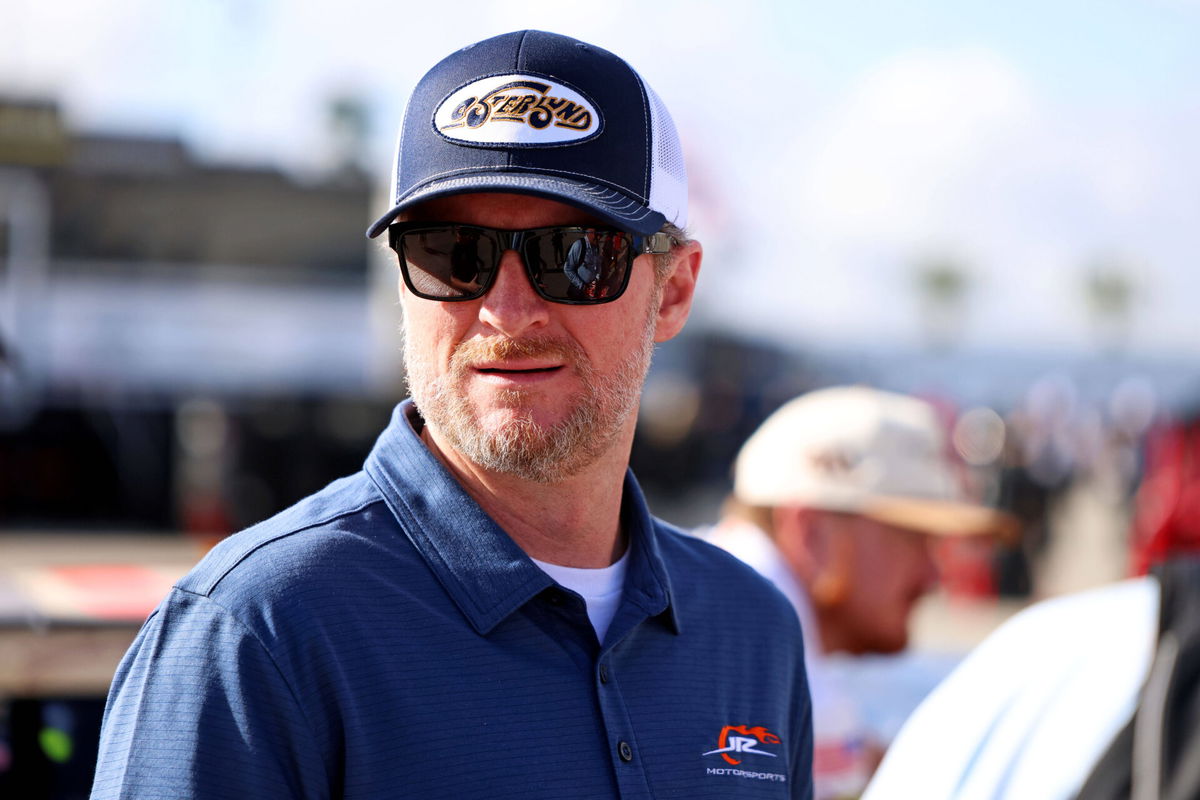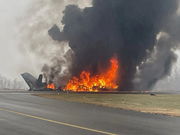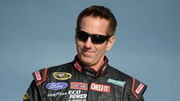
Imago
NASCAR, Motorsport, USA Cup Practice Feb 12, 2025 Daytona Beach, Florida, USA NASCAR team owner Dale Earnhardt Jr. looks on during practice for the Daytona 500 at Daytona International Speedway. Daytona Beach Daytona International Speedway Florida USA, EDITORIAL USE ONLY PUBLICATIONxINxGERxSUIxAUTxONLY Copyright: xPeterxCaseyx 20250212_pjc_bc1_039

Imago
NASCAR, Motorsport, USA Cup Practice Feb 12, 2025 Daytona Beach, Florida, USA NASCAR team owner Dale Earnhardt Jr. looks on during practice for the Daytona 500 at Daytona International Speedway. Daytona Beach Daytona International Speedway Florida USA, EDITORIAL USE ONLY PUBLICATIONxINxGERxSUIxAUTxONLY Copyright: xPeterxCaseyx 20250212_pjc_bc1_039
For decades, Bristol Motor Speedway stood as the crown jewel of short-track racing in NASCAR. Built in 1961, the half-mile oval gained a reputation for chaotic finishes, raucous crowds, and unforgettable rivalries. What made Bristol stand out was not just the noise or the tempers but the racing itself. On its original asphalt surface, drivers could run high, low, or anywhere in between. Back then, events were determined by tire wear, track temperature, and race strategy. This made every event unpredictable and gave the track a character that many fans considered unmatched in the sport. However, a major change in the 1990s altered that identity forever.
Watch What’s Trending Now!
The mid-1990s marked a turning point when Bristol’s surface began failing under stress. Asphalt patches tore apart during practice sessions, creating safety issues and forcing NASCAR and Speedway Motorsports to consider drastic action. Bruton Smith’s decision to address these problems set the stage for a transformation that would make Bristol more durable, yet also more controversial. While the move solved immediate concerns, it triggered debates that still echo among fans and drivers today. Dale Earnhardt Jr. has now voiced that the change not only reshaped the track’s racing style but also erased the very essence of what once made Bristol special.
ADVERTISEMENT
Dale Earnhardt Jr. places the blame on a repavement
According to Dale Earnhardt Jr., the defining moment came when Bristol’s leadership swapped asphalt for concrete. As he recalled on The Dale Jr. Download, “I believe Bruton, having looked at what to do, decided, ‘We’re going to fix that,’ and they concreted the racetrack.” The track had become only the second in NASCAR history to adopt a fully concrete surface, following Dover in 1969. While the move ensured stability under high-stress racing conditions, it introduced a new era of one-dimensional racing. The ability for multiple racing grooves to emerge was a staple of the asphalt era that quickly began to vanish.
For Dale Jr., this shift marked a loss of Bristol’s soul. “The initial concrete version of Bristol was still very similar, and the racing looked quite similar to what we saw with the asphalt racetrack,” he explained. “But when they concreted it the first time, that’s when it truly became a bottom-only racetrack.”
Once, drivers could run the high groove in Turns 1 and 2 or cut low, depending on tire choice and conditions. But now, the new surface has forced competitors into the same lane. Races grew more predictable with time. Meanwhile, some fans enjoyed the aggressive “bump-and-run” tactics that this style encouraged. For the most part, though, people lamented the disappearance of strategy-driven multi-groove battles.
ADVERTISEMENT
The impact was immediate and long-lasting. Bristol’s “concrete era” created the demolition derby style racing that earned the track its gladiatorial nickname, “The Last Great Colosseum.” Yet, Earnhardt Jr.’s reflections highlight how much was lost in the transition. The unpredictability of asphalt racing, where the groove could shift with weather or tire compounds, no longer defined the event. The single-lane dominance shaped not only driver strategies but also fan expectations. It divided the audience between those who cherished the chaos and those who missed the craft.
Now, the question remains whether Bristol can ever recapture its original charm. With NASCAR introducing new car models and tire compounds, surface behavior continues to evolve. Fans still flock to the Tennessee short track. However, Earnhardt Jr.’s comments remind the sport that the magic that defined its asphalt years may be gone for good. Meanwhile, Dale Jr. also gave his comments on the most recent NASCAR playoffs race at Bristol and the factors involved.
ADVERTISEMENT
Top Stories
Greg Biffle Plane Tragedy: What Might Have Caused the Crash That Killed the NASCAR Champ and His Family

“The Biff”: NASCAR Fans Push for Legacy-Defining Award Named After Greg Biffle Following His Tragic Death

Footage Surfaces of Florida Police Arresting NASCAR Veteran Over Disturbing Public Misbehavior

Richard Childress’ Grandson to Be the ‘First Casualty’ of RCR-Kaulig Racing Divorce, Claims Dale Jr.

NTSB Appeals for Greg Biffle’s Wife’s Alleged In-Flight Text Messages as Crash Investigation Heats Up

Dale Jr. credits luck with a pivotal role at Bristol
Dale Earnhardt Jr. has never been shy about voicing what makes NASCAR’s crown jewels stand out. In the aftermath of Christopher Bell’s victory, the Hall of Famer argued that one key decision in how the race played out robbed Bristol of the qualities that once made it so revered. While the victory marked another milestone in Bell’s career, Dale Earnhardt Jr. highlighted that the result said as much about circumstance as it did about performance.
For Earnhardt Jr., the conversation carried weight because Bristol’s reputation has always rested on being a driver’s track. Over the years, fans have associated the venue with grit, precision, and nerve. It was a venue where the strongest cars and boldest moves often defined the night. But tire wear, yellow-flag timing, and strategy cycles dictated much of the latest race. Hence, Dale Earnhardt Jr. suggested that chance factored heavily into the finish. That shift from skill to luck complicates the narrative of what Bristol victories represent in the Next Gen era.
ADVERTISEMENT
Reflecting on Bell’s win, Dale Jr. did not hesitate to outline the role of chance. “I think I said it post race that whoever was going to win that race was going to get really lucky,” he explained. “There’s no way that anybody was going to win without luck being on their side when the yellows came out… what tires you were on at that point in time.” He pointed to caution timing and limited tire availability. Dale Jr. underscored that the night’s outcome relied heavily on external circumstances rather than pure performance.
At the same time, he noted the paradox this creates for drivers. Bell and his crew executed their plan well. However, as Earnhardt Jr. described, “The way that third stage played out with all those rash of yellows… you can’t put tires on all the time. And then if you don’t put tires on and then it runs green, you’re going to be buried.” In his view, strategy windows were razor-thin, leaving competitors vulnerable to factors beyond their control.
ADVERTISEMENT
ADVERTISEMENT
ADVERTISEMENT

